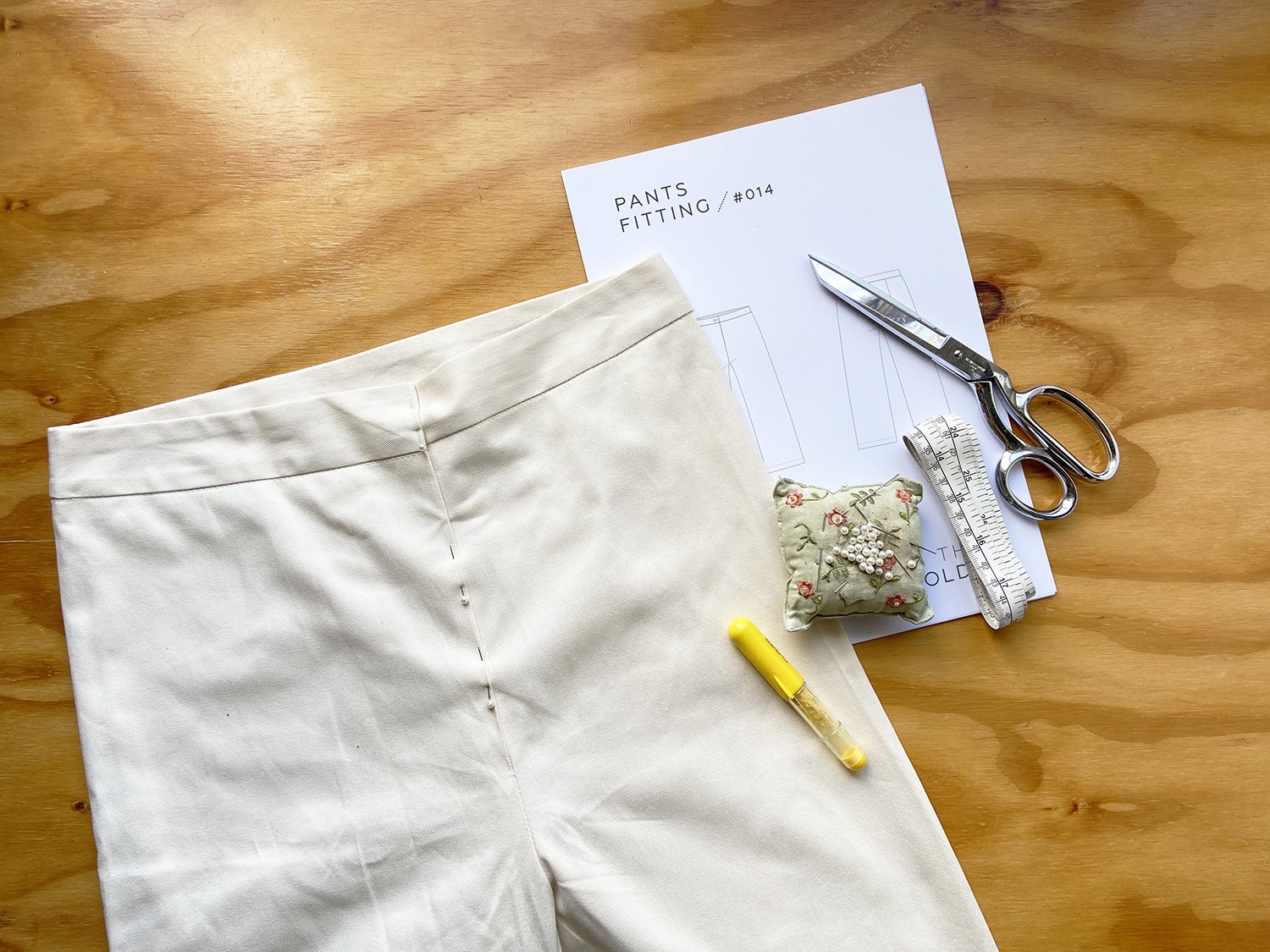THE Q & A SERIES
Learning patternmaking using pattern blocks
I would love to make my own patterns but I get so confused. Do you have a basic pants block that is easy to follow?
Lucille
Chatsworth, South Africa
Hi Lucille,
Making your own patterns can be a little bit confusing when you’re getting started, but you’ve got the right idea - using a block helps a lot!
WHAT IS A PATTERN BLOCK
A pattern block is a foundation pattern that patternmakers use as a base or foundation when drafting patterns.
In the US, a block is referred to as a ‘sloper’ so you may see these terms used interchangeably in books and blocks, depending on where the author is from. We have a whole article about pattern blocks and how you use them that you can read here.
THE IN THE FOLDS PANTS BLOCK
Over the years we have had A LOT of requests for a pants block, so we are excited to say that we’ve just released one as part of our Pants Making Project Series.
This project has been in the works for a very long time. We really wanted to create a pattern that would assist makers to make a pair of pants that fit well, but also one that gave them a base to springboard off when drafting new designs.
The problem with pattern blocks is that they are often drafted to be quite fitted, with minimal ease. Although this can be great as an exercise in fitting, makers often find it difficult to then know what to do with the block and how to use it to make the style of clothes they want to wear.
For this reason we designed our Pants Fitting pattern with a comfortable amount of ease in the waist, hip and through the leg. Once you’ve mastered the fit (with the Fit Kit that we released along with the pattern) you will have a solid starting point to design from, without having to think about adding ease… unless of course you want a pant with more volume, and we will show you how to do that too!
Although the shape of our pants pattern isn’t a conventional pant block shape (for the reasons mentioned above), we made sure we stuck with all the other things that make a block handy to use.
The pant has minimal design details - just a back dart for shaping and a shaped waistband. We left out the pockets so that you can quickly and easily do a fitting and then draft the style of pockets you like. We included the fly pieces in case you want them in the future, but when making toiles we suggest you skip the fly so that you can quickly and easily make adjustments.
WHAT DO YOU USE A PATTERN BLOCK FOR?
Once you have altered the pattern to fit your body, you will then be able to use it as a block. It’s a good idea to transfer your pattern onto cardboard for safe-keeping. This will keep it nice and strong and mean you can use it over and over. It also makes it quick and easy to trace a copy onto paper when you’re ready to use it.
There are two main things you would use a block for as a home sewist:
To check what adjustments you need to make on new patterns. For example, you might be really happy with the crotch shape on your block. When you use another pants pattern you can lay the block onto the crotch to see if you need to make alterations to the other pattern.
To design your own patterns. This is the thing we are really excited about! Once you have a base pattern, there are countless things you can do. Add volume, remove volume, change the leg shape, lower the waist, raise the waist, add panel lines, change the closure type, add any pocket shape you can think of… just to name a few! The options really are endless.
For this month’s issue of Curated by ITF we’re working on pants fitting with the new pants pattern so that next month we can get you patternmaking, because it’s always a good idea to ensure the base pattern fits you well before making design adjustments.
Happy sewing!
Emily
For more issues of the Q & A series, you can check out the archive here.
WHAT YOU’VE BEEN MAKING
Darlow pants made by @listaylorsthreads
Peppermint Wrap top made by @slowaesthetic_









